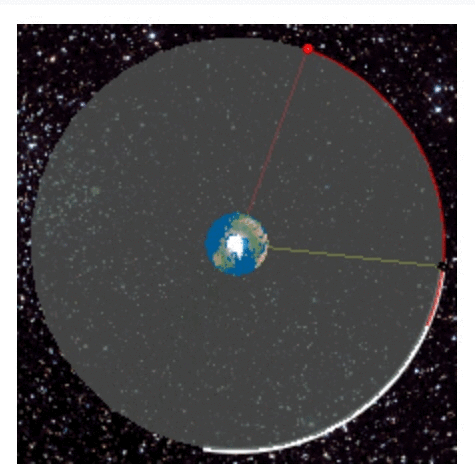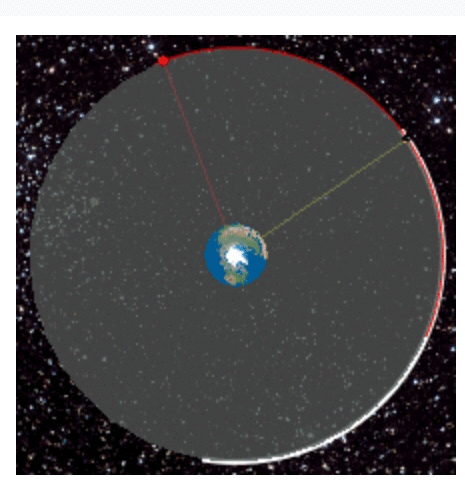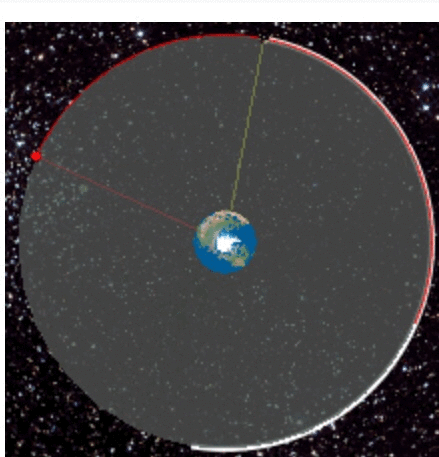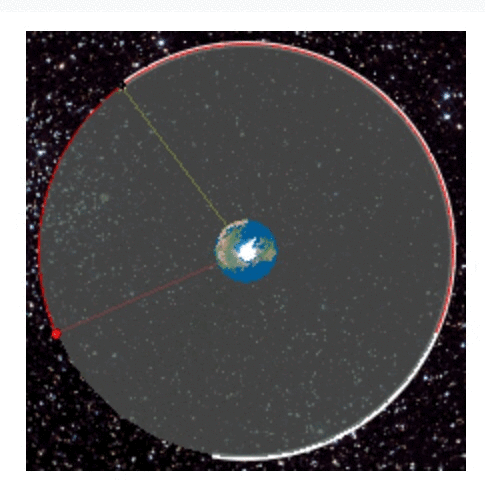It looks like you're using an Ad Blocker.
Please white-list or disable AboveTopSecret.com in your ad-blocking tool.
Thank you.
Some features of ATS will be disabled while you continue to use an ad-blocker.
share:
a reply to: neutronflux
I already told you Neutronflux. Your posts doesnt say wether or not it orbits around the Earth or not. That was the topic for 20 pages. It is irrelevant wether your post is false because your whole post is irrelevant.
Yes or no Neutronflux?
I already told you Neutronflux. Your posts doesnt say wether or not it orbits around the Earth or not. That was the topic for 20 pages. It is irrelevant wether your post is false because your whole post is irrelevant.
Yes or no Neutronflux?
originally posted by: InfiniteTrinity
a reply to: neutronflux
I already told you Neutronflux. Your posts doesnt say wether or not it orbits around the Earth or not. That was the topic for 20 pages. It is irrelevant wether your post is false because your whole post is irrelevant.
Yes or no Neutronflux?
Can you provide any intelligent reply to the items posted below, and the questions asked of you?
If you modeled the movement of the solar system from a position using the sun as the origin. One, the model would have the earth circling the sun. Two, the model would have the earth rotating about its axis. Three, the model would have an earth geostationary satellite making a circle around the mass of the earth. The model would have an earth geostationary satellite circling the same axis the earth rotates about with an orbit radius of 42,164.14 km. Now, what is not true about any of this post. And why.
a reply to: neutronflux
I have no problem discussing every aspect of your post, after we get closure on the current subject. So do geostationary satellites orbit around the Earth like you and your peers have been claiming for pages and pages?
Yes or no?
Stop embarassing yourself.
I have no problem discussing every aspect of your post, after we get closure on the current subject. So do geostationary satellites orbit around the Earth like you and your peers have been claiming for pages and pages?
Yes or no?
Stop embarassing yourself.
edit on 20-8-2019 by InfiniteTrinity because: (no reason given)
originally posted by: InfiniteTrinity
a reply to: neutronflux
I have no problem discussing every aspect of your post, after we get closure on the current subject. So do geostationary satellites orbit around the Earth like you and your peers have been claiming for pages and pages?
Yes or no?
Stop embarassing yourself.
I am posting about modeling the movements of a satellite with the pictured parameters using the sun as the point of origin.
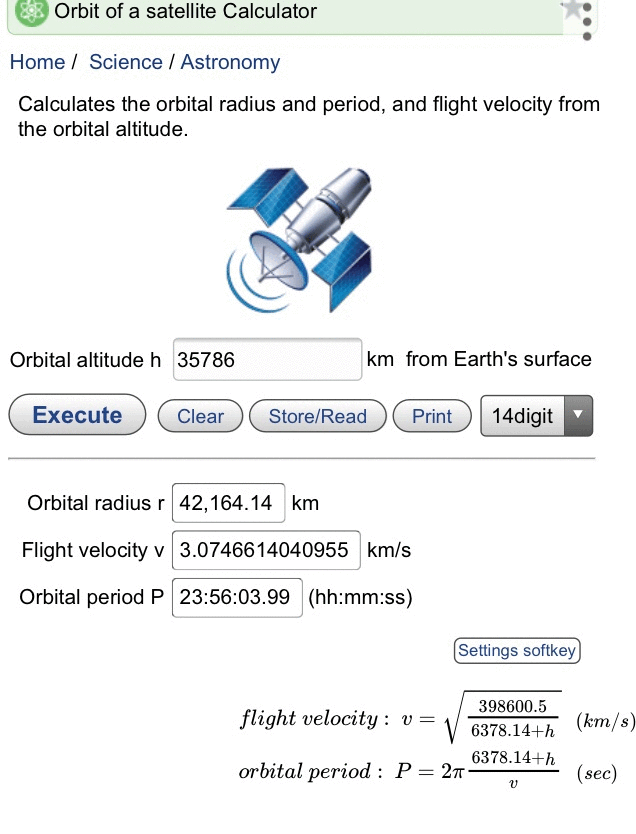
Again..
If you modeled the movement of the solar system from a position using the sun as the origin. One, the model would have the earth circling the sun. Two, the model would have the earth rotating about its axis. Three, the model would have an earth geostationary satellite making a circle around the mass of the earth. The model would have an earth geostationary satellite circling the same axis the earth rotates about with an orbit radius of 42,164.14 km. Now, what is not true about any of this post. And why.
edit on 20-8-2019 by neutronflux because: Added and fixed
edit on 20-8-2019 by neutronflux because: Added and fixed
Well its clear to everyone that geostationary satellites dont orbit around the Earth then.
originally posted by: InfiniteTrinity
Well its clear to everyone that geostationary satellites dont orbit around the Earth then.
I am posting about modeling the movements of a satellite with the pictured parameters using the sun as the point of origin.

Again.. do you have anything intelligent to add?
If you modeled the movement of the solar system from a position using the sun as the origin. One, the model would have the earth circling the sun. Two, the model would have the earth rotating about its axis. Three, the model would have an earth geostationary satellite making a circle around the mass of the earth. The model would have an earth geostationary satellite circling the same axis the earth rotates about with an orbit radius of 42,164.14 km. Now, what is not true about any of this post. And why.
a reply to: neutronflux
Why do you ask. I made no claims relating to these points.
You and your peers however have been insisting that a geostationary satellite is orbiting around the Earth.
So is it? Yes or no?
Again why are you objecting?
Do you need it to orbit around the Earth?
Now, what is not true about any of this post. And why.
Why do you ask. I made no claims relating to these points.
You and your peers however have been insisting that a geostationary satellite is orbiting around the Earth.
So is it? Yes or no?
Again why are you objecting?
Do you need it to orbit around the Earth?
a reply to: InfiniteTrinity
You agree the parameters for a satellite in the picture below are mathematical sound:

And if you modeled the movements of a satellite with the pictured parameters above, this is how the movement would look as the sun as the point of origin?
If you modeled the movement of the solar system from a position using the sun as the origin. One, the model would have the earth circling the sun. Two, the model would have the earth rotating about its axis. Three, the model would have an earth geostationary satellite making a circle around the mass of the earth. The model would have an earth geostationary satellite circling the same axis the earth rotates about with an orbit radius of 42,164.14 km. Now, what is not true about any of this post. And why.
You agree the parameters for a satellite in the picture below are mathematical sound:

And if you modeled the movements of a satellite with the pictured parameters above, this is how the movement would look as the sun as the point of origin?
If you modeled the movement of the solar system from a position using the sun as the origin. One, the model would have the earth circling the sun. Two, the model would have the earth rotating about its axis. Three, the model would have an earth geostationary satellite making a circle around the mass of the earth. The model would have an earth geostationary satellite circling the same axis the earth rotates about with an orbit radius of 42,164.14 km. Now, what is not true about any of this post. And why.
a reply to: InfiniteTrinity
Soo you have anything intelligent to post? Anything backed by fact? Or science?
Soo you have anything intelligent to post? Anything backed by fact? Or science?
You really think you can act like the last 20 pages didnt happen. You were all literally saying that geosatellites orbit around the Earth.
Now all of sudden you dont dare repeat this.
Nuff said.
Now all of sudden you dont dare repeat this.
Nuff said.
originally posted by: InfiniteTrinity
You really think you can act like the last 20 pages didnt happen. You were all literally saying that geosatellites orbit around the Earth.
Now all of sudden you dont dare repeat this.
Nuff said.
What are you talking about.
Are the pictured parameters below for a satellite mathematical valid?

What would the movements of a satellite with the pictured parameters above look like as modeled with the sun as the point of origin?
I think it would be something like this?
If you modeled the movement of the solar system from a position using the sun as the origin. One, the model would have the earth circling the sun. Two, the model would have the earth rotating about its axis. Three, the model would have an earth geostationary satellite making a circle around the mass of the earth. The model would have an earth geostationary satellite circling the same axis the earth rotates about with an orbit radius of 42,164.14 km. Now, what is not true about any of this post. And why.
Now? Do you have any fact or science based arguments?
a reply to: InfiniteTrinity
What, this? Ok? Quote what is false from the below with logic, supporting evidence, and cited sources
originally posted by: neutronflux
Nice out of context quoting. The whole argument
neutronflux
a reply to: InfiniteTrinity
neutronflux
How. How is it debunked?
How does geostationary orbit not meet the definition of orbit...
neutronflux
a reply to: InfiniteTrinity
You
What mistake? You don’t have a clear statement on what the mistake is. All you have is an erroneous opinion that has no logic, and keep posting debunked with no actual proof or evidence.
One, “In physics, an orbit is the gravitationally curved trajectory of an object,“. Does a geostationary satellite have a curved trajectory? It’s does by definition to stay above the same point on the rotating curved surface of the earth. To do this, a geostationary satellite is orbiting the central mass of the earth. Is that false.
Two, “Normally, orbit refers to a regularly repeating trajectory, although it may also refer to a non-repeating trajectory”. For a geostationary satellite, the orbit has the same period as the rotation of the earth. As a point on earth completes a full rotation, a geostationary satellite completes one full rotation of its obit. Is that false.
Three, “To a close approximation, planets and satellites follow elliptic orbits, with the central mass being orbited at a focal point of the ellipse,[2] as described by Kepler's laws of planetary motion.” Geostationary satellites complete one orbit around the earth’s central mass every 24 hours. Is that false.
Four. Now, what your hung up on. “such as the trajectory of a planet around a star or a natural satellite around a planet.“ a geostationary satellite completes one orbit ever 24 hours as the earth completes one rotation. It’s that false.
By definition, a geostationary orbit is an orbit. If a geostationary satellite did not complete one full circle of its orbit every 24 hours, it would not stay above the same point on earth. That full circle orbit is around the earth’s central mass.
With the definition of orbit having noting to do with earth’s rotation.
neutronflux
a reply to: InfiniteTrinity
You
Again...
From the earth’s surface. A geostationary satellite appears to be “fixed”. But that same satellite is traveling the “curve” of earth’s gravity well. Orbiting around the center of earth’s gravity well. If you use the earth’s axis as a fixed point of origin, you can solve for the angular momentum of a geostationary / geosynchronous satellite.
You
The only thing dumb is that you cannot realize the earth’s rotation has nothing to do with earth’s gravity well. And it’s ”dumb” that you think a satellite cannot be in orbit because it is at a height and speed that matches the earth’s rotation.
First off, the earth’s rotation has nothing to do with the ability of a satellite to orbit. In reality, a satellite does not orbit the center of the earth. A satellite orbits the center of Earth’s gravity well. An orbiting satellite could careless if the earth was rotating, and at what speed.
What is gravity?
spaceplace.nasa.gov...
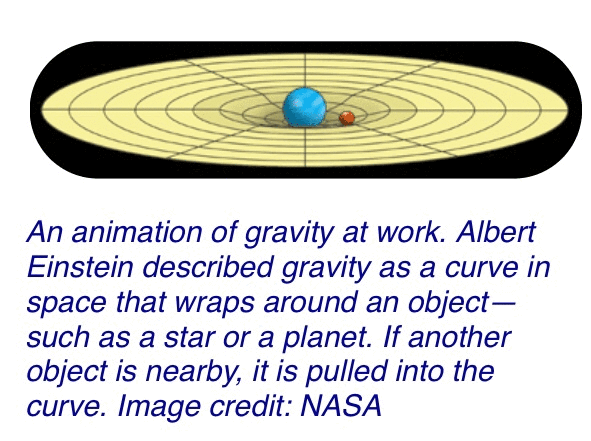
Second: Why can you not get through your head a geostationary/ geosynchronous still obits the earth. It’s just at a speed that keeps it above a specific point and n earth. But a geostationary / geosynchronous satellite is still traveling around earth’s gravity well.
What, this? Ok? Quote what is false from the below with logic, supporting evidence, and cited sources
originally posted by: neutronflux
originally posted by: InfiniteTrinity
a reply to: neutronflux
Your definition,
In physics, an orbit is the gravitationally curved trajectory of an object,[1] such as the trajectory of a planet around a star or a natural satellite around a planet.
Basically the same as NASA's. It was easier to link than just qoute it?
So does a geostationary satellites go around Earth? No? Then they dont orbit.
Thanks for your support.
Nice out of context quoting. The whole argument
neutronflux
a reply to: InfiniteTrinity
neutronflux
originally posted by: InfiniteTrinity
Well, still no opposition. Thanks for the display.
Geostationary orbits debunked.
How. How is it debunked?
How does geostationary orbit not meet the definition of orbit...
neutronflux
a reply to: InfiniteTrinity
You
Then why do you keep making the same mistake.
What mistake? You don’t have a clear statement on what the mistake is. All you have is an erroneous opinion that has no logic, and keep posting debunked with no actual proof or evidence.
Orbit
en.m.wikipedia.org...
In physics, an orbit is the gravitationally curved trajectory of an object,[1] such as the trajectory of a planet around a star or a natural satellite around a planet. Normally, orbit refers to a regularly repeating trajectory, although it may also refer to a non-repeating trajectory. To a close approximation, planets and satellites follow elliptic orbits, with the central mass being orbited at a focal point of the ellipse,[2] as described by Kepler's laws of planetary motion.
One, “In physics, an orbit is the gravitationally curved trajectory of an object,“. Does a geostationary satellite have a curved trajectory? It’s does by definition to stay above the same point on the rotating curved surface of the earth. To do this, a geostationary satellite is orbiting the central mass of the earth. Is that false.
Two, “Normally, orbit refers to a regularly repeating trajectory, although it may also refer to a non-repeating trajectory”. For a geostationary satellite, the orbit has the same period as the rotation of the earth. As a point on earth completes a full rotation, a geostationary satellite completes one full rotation of its obit. Is that false.
Three, “To a close approximation, planets and satellites follow elliptic orbits, with the central mass being orbited at a focal point of the ellipse,[2] as described by Kepler's laws of planetary motion.” Geostationary satellites complete one orbit around the earth’s central mass every 24 hours. Is that false.
Four. Now, what your hung up on. “such as the trajectory of a planet around a star or a natural satellite around a planet.“ a geostationary satellite completes one orbit ever 24 hours as the earth completes one rotation. It’s that false.
By definition, a geostationary orbit is an orbit. If a geostationary satellite did not complete one full circle of its orbit every 24 hours, it would not stay above the same point on earth. That full circle orbit is around the earth’s central mass.
With the definition of orbit having noting to do with earth’s rotation.
neutronflux
a reply to: InfiniteTrinity
You
Can you now explain how a geostationary sat does it? Since it doesnt fall around the Earth, which would maintain its velocity?
Again...
From the earth’s surface. A geostationary satellite appears to be “fixed”. But that same satellite is traveling the “curve” of earth’s gravity well. Orbiting around the center of earth’s gravity well. If you use the earth’s axis as a fixed point of origin, you can solve for the angular momentum of a geostationary / geosynchronous satellite.
You
You guys are hilarious. You keep posting the same dumb contradiction I debunked about 40 times now.
The only thing dumb is that you cannot realize the earth’s rotation has nothing to do with earth’s gravity well. And it’s ”dumb” that you think a satellite cannot be in orbit because it is at a height and speed that matches the earth’s rotation.
First off, the earth’s rotation has nothing to do with the ability of a satellite to orbit. In reality, a satellite does not orbit the center of the earth. A satellite orbits the center of Earth’s gravity well. An orbiting satellite could careless if the earth was rotating, and at what speed.
What is gravity?
spaceplace.nasa.gov...

Second: Why can you not get through your head a geostationary/ geosynchronous still obits the earth. It’s just at a speed that keeps it above a specific point and n earth. But a geostationary / geosynchronous satellite is still traveling around earth’s gravity well.
Geostationary orbit
en.m.wikipedia.org...
A geostationary orbit, often referred to as a geosynchronous equatorial orbit[1] (GEO), is a circular geosynchronous orbit 35,786 km (22,236 mi) above Earth's equator and following the direction of Earth's rotation. An object in such an orbit appears motionless, at a fixed position in the sky, to ground observers. Communications satellites and weather satellites are often placed in geostationary orbits, so that the satellite antennas (located on Earth) that communicate with them do not have to rotate to track them, but can be pointed permanently at the position in the sky where the satellites are located. Using this characteristic, ocean-color monitoring satellites with visible and near-infrared light sensors (e.g. GOCI) can also be operated in geostationary orbit in order to monitor sensitive changes of ocean environments.
originally posted by: InfiniteTrinity
You really think you can act like the last 20 pages didnt happen. You were all literally saying that geosatellites orbit around the Earth.
Now all of sudden you dont dare repeat this.
Nuff said.
Is that all you have? Replies totally based in shaming, bullying, trolling individuals? Totally void of any intelligent and scientific value? Totally void of any logic or informed opinion?
a reply to: neutronflux
So you admit again that it doesnt orbit the Earth. Btw still dont know what central mass is.
Why do you leave out the rest of the definition that you posted yourself? It was a lot more specfic than that.
Why are you so dishonest?
Just having a gravitationally curved trajectory is not enough to qualify for orbit. An asteroid can have a gravitationally curved trajectory without it orbiting anything, for instance. That's why your source specifically mentioned an object going around another object.
So again, not around Earth?
To do this, a geostationary satellite is orbiting the central mass of the earth. o
So you admit again that it doesnt orbit the Earth. Btw still dont know what central mass is.
“In physics, an orbit is the gravitationally curved trajectory of an object,“.
Why do you leave out the rest of the definition that you posted yourself? It was a lot more specfic than that.
In physics, an orbit is the gravitationally curved trajectory of an object, such as the trajectory of a planet around a star or a natural satellite around a planet. ..
Why are you so dishonest?
Just having a gravitationally curved trajectory is not enough to qualify for orbit. An asteroid can have a gravitationally curved trajectory without it orbiting anything, for instance. That's why your source specifically mentioned an object going around another object.
But a geostationary satellite is still traveling around earth’s gravity well.
So again, not around Earth?
edit on 20-8-2019 by InfiniteTrinity because: (no reason given)
a reply to: neutronflux
If it stays above a specific point then it is not moving around the Earth, and thus, not orbiting the Earth. Remember from the last 300 times?
All I read is "not travelling around Earth".
Second: Why can you not get through your head a geostationary still obits the earth. It’s just at a speed that keeps it above a specific point and n earth
If it stays above a specific point then it is not moving around the Earth, and thus, not orbiting the Earth. Remember from the last 300 times?
But a geostationary satellite is still traveling around earth’s gravity well.
All I read is "not travelling around Earth".
edit on 20-8-2019 by InfiniteTrinity because: (no reason given)
a reply to: InfiniteTrinity
You
The earth rotates, right. If the geostationary satellite EchoStar didn’t circle the earth’s circumference, then it wouldn’t stay above the same spot on earth. Is that false.
If you used the sun as an origin point to model EchoStar I’s relative motion in this solar system, you would model an elliptical orbit around earth with these parameters relative to earth’s axis. Semi-major axis of 42,164.0 km, perigee altitude 35,780.7 km, apogee altitude 35,806.7 km, inclination 0.7 degrees, period 1,436.1 minutes. Is that false.
So, EchoStar 1 completes one orbit of earth’s mass with a Semi-major axis of 42,164.0 km every 1,436.1 minutes. is that false.
And yes. You can use earth’s axis to show that EchoStar I does complete one full orbit every 1,436.1 minutes.
Sorry. Use the actual tools of math and science, you lose hands down in the modeling the motions of EchoStar I.
You
If it stays above a specific point then it is not moving around the Earth, and thus, not orbiting the Earth. Remember from the last 300 times?
The earth rotates, right. If the geostationary satellite EchoStar didn’t circle the earth’s circumference, then it wouldn’t stay above the same spot on earth. Is that false.
EchoStar I
EchoStar I is a communications satellite operated by EchoStar. Launched in 1995 it was operated in geostationary orbit at a longitude of 77 degrees west for 12 or 15 years. The company has approved the transfer of the 77 degree west orbital position to QuetzSat as of September 22, 2010.
en.m.wikipedia.org...
If you used the sun as an origin point to model EchoStar I’s relative motion in this solar system, you would model an elliptical orbit around earth with these parameters relative to earth’s axis. Semi-major axis of 42,164.0 km, perigee altitude 35,780.7 km, apogee altitude 35,806.7 km, inclination 0.7 degrees, period 1,436.1 minutes. Is that false.
So, EchoStar 1 completes one orbit of earth’s mass with a Semi-major axis of 42,164.0 km every 1,436.1 minutes. is that false.
And yes. You can use earth’s axis to show that EchoStar I does complete one full orbit every 1,436.1 minutes.
Sorry. Use the actual tools of math and science, you lose hands down in the modeling the motions of EchoStar I.
edit on 20-8-2019 by
neutronflux because: Added and fixed
edit on 20-8-2019 by neutronflux because: Added and fixed
a reply to: neutronflux
So it doesnt orbit around the Earth then?
It obviously doesnt otherwise you would have said Earth instead of Earth's mass.
Why dont you just admit that it doesnt orbit around the Earth.
So, EchoStar 1 completes one orbit of earth’s mass
So it doesnt orbit around the Earth then?
It obviously doesnt otherwise you would have said Earth instead of Earth's mass.
Why dont you just admit that it doesnt orbit around the Earth.
a reply to: InfiniteTrinity
Maybe this will help.
Maybe this will help.
Technically, Earth Does Not Orbit Around the Sun
www.realclearscience.com...
The discovery that Earth revolves around the Sun was revolutionary. It fundamentally changed how we viewed the cosmos, as well as ourselves.
But the Earth does not revolve around the Sun. At least, not exactly. Time to get pedantic.
"Technically, what is going on is that the Earth, Sun and all the planets are orbiting around the center of mass of the solar system," writes Cathy Jordan, a Cornell University Ask an Astronomer contributor.
"The center of mass of our solar system very close to the Sun itself, but not exactly at the Sun's center."
a reply to: neutronflux
So how does this support your claim that geostationary satellites orbit around the Earth?
But the Earth does not revolve around the Sun. At least, not exactly. Time to get pedantic. "Technically, what is going on is that the Earth, Sun and all the planets are orbiting around the center of mass of the solar system," writes Cathy Jordan, a Cornell University Ask an Astronomer contributor.
So how does this support your claim that geostationary satellites orbit around the Earth?
edit on 20-8-2019 by InfiniteTrinity because: (no
reason given)
a reply to: InfiniteTrinity
Because it is totally acceptable to say a geostationary satellite orbits earth’s center of gravity. And it’s totally acceptable to use earth’s center of gravity as an origin point to accurately show a geostationary satellite orbits earth’s center of gravity once a day.
Another example. The moon actually doesn’t “orbit” around the earth.
Because it is totally acceptable to say a geostationary satellite orbits earth’s center of gravity. And it’s totally acceptable to use earth’s center of gravity as an origin point to accurately show a geostationary satellite orbits earth’s center of gravity once a day.
Another example. The moon actually doesn’t “orbit” around the earth.
Barycenter
en.m.wikipedia.org...
If one of two orbiting bodies is much more massive than the other and the bodies are relatively close to one another, the barycenter will typically be located within the more massive object. In this case, rather than the two bodies appearing to orbit a point between them, the less massive body will appear to orbit about the more massive body, while the more massive body might be observed to wobble slightly. This is the case for the Earth–Moon system, in which the barycenter is located on average 4,671 km (2,902 mi) from Earth's center, 75% of Earth's radius of 6,378 km (3,963 mi).
Did You Know that the Moon Doesn’t Orbit the Earth?
Orbit means to move in a curved path around another something. In astronomy, celestial bodies are generally described as moving or orbiting some other celestial body. For example, the Moon is said to orbit or revolve around the Earth. The Earth doesn’t stays in position as the Moon circles it.
Instead, the Moon as well as the Earth orbit the barycenter between the two celestial bodies.
scienceprojectideasforkids.com...
edit on 20-8-2019 by neutronflux because: Fixed more
edit on 20-8-2019 by neutronflux because: Fixed quote
new topics
-
Trump picks Gov. Kristi Noem to serve as homeland security secretary
2024 Elections: 20 minutes ago -
Elon's Starlink Stole The Election For Trump--Leftist Conspiracy Theorists Charge
General Conspiracies: 3 hours ago -
Speaker Johnson Orders Entire Biden Administration to Preserve and Retain All Records - Documents
US Political Madness: 3 hours ago -
Resident Plane enthusiasts needed weird noise
General Chit Chat: 6 hours ago -
Fired FEMA Employee Says It Was Not ‘Isolated’ Incident: ‘Colossal Event Of Avoidance’
US Political Madness: 9 hours ago -
Australia has been holding out on us
Music: 9 hours ago
top topics
-
Fired FEMA Employee Says It Was Not ‘Isolated’ Incident: ‘Colossal Event Of Avoidance’
US Political Madness: 9 hours ago, 23 flags -
Speaker Johnson Orders Entire Biden Administration to Preserve and Retain All Records - Documents
US Political Madness: 3 hours ago, 16 flags -
Elon's Starlink Stole The Election For Trump--Leftist Conspiracy Theorists Charge
General Conspiracies: 3 hours ago, 14 flags -
Trump picks Gov. Kristi Noem to serve as homeland security secretary
2024 Elections: 20 minutes ago, 5 flags -
Australia has been holding out on us
Music: 9 hours ago, 4 flags -
Resident Plane enthusiasts needed weird noise
General Chit Chat: 6 hours ago, 4 flags
active topics
-
Trump picks Gov. Kristi Noem to serve as homeland security secretary
2024 Elections • 5 • : Lumenari -
The Acronym Game .. Pt.4
General Chit Chat • 938 • : JJproductions -
Trump Portrait Ended Better Than Expected--WATCH THIS
2024 Elections • 14 • : RazorV66 -
Australia has been holding out on us
Music • 4 • : ColeYounger2 -
Witnesses who will testify in next week's hearing on UAPs
Aliens and UFOs • 26 • : JJproductions -
Russia Ukraine Update Thread - part 3
World War Three • 6767 • : tomeville -
Elon's Starlink Stole The Election For Trump--Leftist Conspiracy Theorists Charge
General Conspiracies • 20 • : EyeoftheHurricane -
Resident Plane enthusiasts needed weird noise
General Chit Chat • 10 • : nugget1 -
Fired FEMA Employee Says It Was Not ‘Isolated’ Incident: ‘Colossal Event Of Avoidance’
US Political Madness • 34 • : AlroyFarms -
President-Elect DONALD TRUMP's 2nd-Term Administration Takes Shape.
Political Ideology • 131 • : xuenchen

